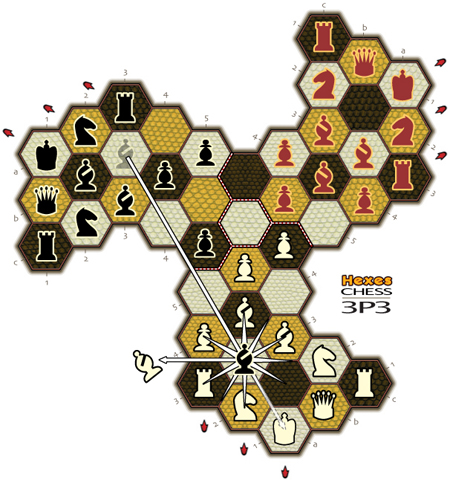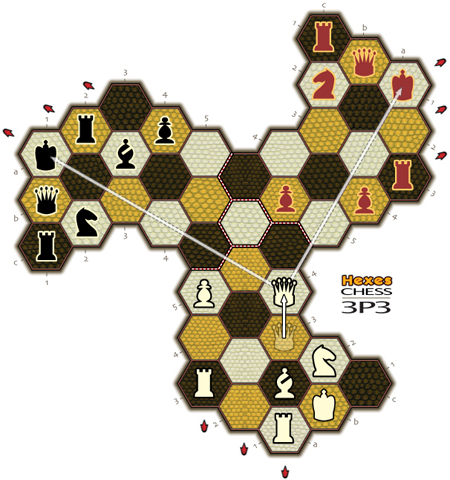CheckWhen a player moves a piece to a position where an opponent's king is directly threatened, that king is said to be in check. The player putting the opponent's king in check must announce, "Check." The player with a king in check must respond when their turn comes by escaping check.
Check PendingWhen a player checks the opponent on their right, the opponent on their left gets to move before the checked player can respond. That opponent might interfere with the check or might exploit it. This is called check pending.(See below.) 
. Double CheckThere are two types of double check. The first type is when a king is in check by two pieces at once. The second is when one piece puts two kings in check with a single move. The figure below illustrates the second type.
|
|
 • capture the checking piece
• capture the checking piece